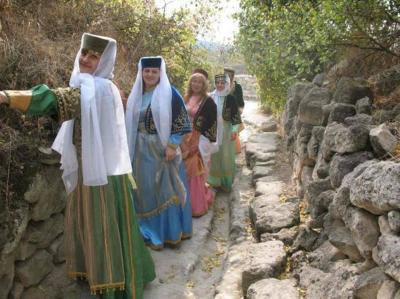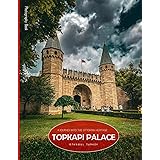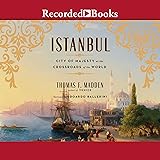5 TURKISH STATE in UKRAINE
- European Hun Empire Balamir 375 -469: 94 years
- Khazar Khaganate Böri Şad 651-983: 332 years
- Golden Horde State Batu Khan 1236-1502: 266 years
- Crimean Khanate 1441-1783: 342 years
- Ottoman Empire Osman Gazi 1299-1922 : 623 years
TURKISH PEOPLES HISTORICAL
- Scythians
- the Huns
- Khazars,
- Pechenegs,
- Uz (Torque)
- Cumans
- Kipchaks
In the 19th century, the territory of Ukraine became the homeland of the Proto -Bulgarians of Turkish origin. At the end of the century, the Bulgarians left the region and left it in the hands of the Khazars , a tribe of Turkish origin . Kyiv, now the capital of Ukraine, was part of the Khazar Khanate until the middle of the 9th century. Around 860, it was taken from the Khazars by the commanders of the Viking king Rurik and became part of the Principality of Kyiv.
The first inhabitants of the Ukrainian geography are Cimmerians, Scythians and Sarmatians . II. The German-origin Goths put an end to the Sarmatian domination, which lasted until the 19th century. The Huns , invading Ukraine in 375 BC , abolished Gothic domination. The Ukrainian land, which was emptied due to the migration of the Tribes caused by the Hun invasion, in the V. century, the İdil Bulgars of Turkish origin, VI. It was captured by the Avars in the 19th century. The effect of Turkish tribes that started in this way on Ukraine VII-XIII. centuries with the Khazars, Pechenegs, Uzs (Tork) and Cumans.continued.
The Middle Dnieper, Pripet river, Carpathian mountains and Vistula river sites were considered the homeland of the ancient Slavs (Kurat, p. 4). Most of the Slavs, who could not have political unity, were in the VIII. At the beginning of the century, it came under the rule of the Khazar Khanate. The early history of Ukraine is connected with the Principality of Kiyef, which was founded by the Varangians and destroyed by the Tatars in 1240. It is claimed that the Principality of Kiyef was formed by a Turkish tribe with a variant of “Kiy, Koy, Kay”, the first knez had the title of “kagan” and their center Kiyef was based on their name.
https://islamancyclopedisi.org.tr/ukraine#2-tarih
TURKISH PEOPLES TODAY
Ukraine: Turks: Religions
- Karaim- Karaim: Judeo-Karaim Sect (Ukraine, Poland)
- Krymchak: Jewish (Ukraine)
- Romanians: Christian (Ukraine)
- Urums: Christian (Ukraine)
——– Muslim Turks:——–
- Crimean Tartars
- Meskhetian Turks
——Orthodox Christian Turks——–
- Urums, Ukraine
- Rumeys, Ukraine
Urums
Greco Tatars living on the shores of the Sea of Azov in Ukraine are divided into two, namely Urums and Rumeys. The Urums, a little-known Turkish community, describe themselves as “We are not Greek or Hellenic, we are Greco Tatars. Helen is different, Greco Tatar is different”.
Urums are today the Ukrainian cities of Former Crimea, Balıklava, Kerch, Kefe, Yalta and Gözleve, the center of Donetsk province, and the cities of Mariupol, Zaparoje, Dniyepropetrovsk and 27 towns connected to these cities (Starobeşova, Starolaspa, Manguş, Granitnaya, Staroignatovka, Mirna, Staromolinovka). , Komar, Ulaklı, Bagatiri) and lives in the village.
In the official census conducted in 1989, it is reported that approximately 60,000 Urums live on the territory of Ukraine.
Urums, who are one of two different communities and speak Turkish, are descendants of Kipchak and Oghuz Turks.
Rumeys, Ukraine
The Rumeys, on the other hand, are a mosaic of peoples, including ethnically and genetically Turkish, Greek, Genoese and Latin peoples. However, it was revealed by Russian researchers that this community was of Turkish origin.
Greece is making great efforts to unite these communities living in Ukraine and the Greeks under one roof. In this context, the organization called the “Greek Federation” has been trying to prove the unfounded claim that the Urums, Romanians and Greeks are descended from the same lineage, through Greek language courses and various social activities since 1990.
However, today Urums and Rumeys and Greeks did not unite, as if proving that this view was completely wrong. Because the completely different features between the Greeks and this Turkish-origin Christian community create differences between these two peoples and prevent them from uniting.
Official government institutions established in Greece operate to ensure communication and coordination with these communities. In this regard, Greece, which also provides support from Western countries and funds, does not fail to help the region, and it is also stated that they sent some of the Greeks, Urum and Rumeys, who thought about the welfare of the people, to Greece and Southern Cyprus as immigrants.
–————– Jewish Turks———-
- Karaim (Karaite) people. Ukraine, Poland
- Ukraine
Judaism: Jewish Turks
Some of the Karaim Turks, who were subject to the Khazar State, entered the Karaim sect of Judaism.
The Khazars accepted Judaism in 740. Among the Khazars, Judaism was limited to the khan and his entourage, or mostly to the ruling and aristocratic group. Judaism was not limited to the Khazars among the Turks; In addition to the Caspian and Karaites, some Turkish tribes such as Kaliz, Kabar, and Kipchak also converted to the Jewish religion (Kuzgun, 1993: 194).
The Khazars, who converted to Judaism, used the Hebrew script, as we find examples of many Turks who converted to other religions. However, they preserved Turkish. History of Jewish colonies in Azerbaijan VII-X. stretches for centuries. The history of these Karaites, known as “Mountain Jews” in Azerbaijan, is probably related to the Khazar Empire (Güngör, 2002, C3: 279).
The Khazars, who first belonged to Shamanism, recognized Judaism in the 8th century with the arrival of the Byzantine Empire, persecuted Jews. However, the Khazar State preserved Judaism as an official religion until the end. So much so that, according to a rumor, the Khazar ruler, who heard that Muslim states demolished a synagogue, had a minaret in Itil destroyed in 922 (Togan:158; cited in January, 1983:61).
- Karaim (Karaite) people
Ukraine, Poland
Native to Crimea, Lithuania, Poland
Ethnicity Crimean Karaites (2014)
Native speakers 80 (2014)
language family
- Turkish
- Common Turkic
- Kipchak
- Kypchak–Juman
- Karaim
Writing system: Cyrillic script, Latin script, Hebrew alphabet
official status:
Recognized minority Language in
- Poland
• Ukraine
• Russia
The Karaim language is a Turkic language with Hebrew influences, in a similar manner to Yiddish or Judaeo-Spanish. It is spoken by only a few dozen Crimean Karaites (Qrimqaraylar) in Lithuania, Poland and Crimea and Galicia in Ukraine.
The three main dialects are those of Crimea, Trakai-Vilnius and Lutsk-Halych all of which are critically endangered. The Lithuanian dialect of Karaim is spoken mainly in the town of Trakai by a small community living there since the 14th century.
There is a chance the language will survive in Trakai as a result of official support and because of its appeal to tourists coming to the Trakai Island Castle, where Crimean Karaites are presented as the castle’s ancient defenders.
- Crimean Karaites
Total population ≈2,500
- Ukraine (including Crimea) 1,196
• Crimea 715
• Israel ~500
• Poland 346
• Lithuania 241
• Russia 205
languages
- Karaim, Crimean Tatar, Lithuanian, Polish, Russian
religion
- Karaite Judaism, Christianity
Related ethnic groups: Karaite Jews, Krymchaks, Samaritans, Ashkenazi Jews, Sephardi Jews, Mizrahi Jews, Crimean Tatars, Turkic peoples
The Crimean Karaites or Krymkaraylar, also known as Karaims and Qarays, are an ethnicity derived from Turkic-speaking adherents of Karaite Judaism in Central and Eastern Europe, especially in the territory of the former Russian Empire. “Karaim” is a Russian, Ukrainian, Belarusian, Polish and Lithuanian name for the community.
Turkic-speaking Karaite Jews (in the Crimean Tatar language, Qaraylar) have lived in Crimea for centuries. Their origin is a matter of great controversy. Most modern scientists regard them as descendants of Karaite Jews who settled in Crimea and adopted a Kypchak language. Others view them as descendants of Khazar or Cuman, Kipchak converts to Karaite Judaism. Today, many Crimean Karaites reject ethnic Semitic origins theories and identify as descendants of the Khazars.





















